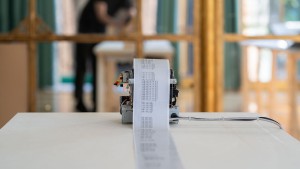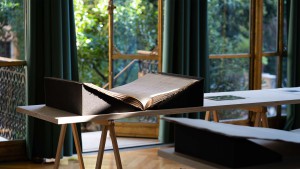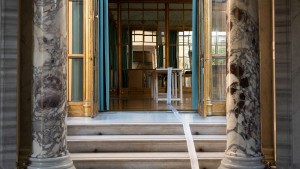- Concept, Development, Realization
Sebastian Felix Ernst (ERNST-Office) & Christian Losert (ATELIER E)
A research-based exhibition that critically engages with the legacy of renaissance proportions in architecture.
PAREIDOLIA
A corpus of architectural drawings featured in Giacomo Antonelli’s volume Vie, piazze e monumenti di Roma (1835), recently digitized from the Bibliotheca Hertziana’s holdings, is turned into a dataset for a “self-learning” neural network. After a training process, the software generates drawings translated from algorithmically derived cityscapes. Besides transposing the nineteenth-century visual input into a computational output, the network iteratively produces new rules for its progressive calculations. It thereby accentuates and re-invents, in dream-like visualizations, canonical design elements, relationships and proportions. Machinic pareidolia—the flickering projection of learned patterns—is here employed to test out the potential for variance contained in the scripts of a long influential architectural style, as they undergo contingent, individual interpretation.
Showcased at the Bibliotheca Hertziana’s Sala degli specchi are the rare books on architecture that the software was trained on, as well as visualizations that span across different media and formats. These visualizations provide insights into the algorithmic processuality itself—generally opaque to nonspecialist observers—and into its outcomes. With this constellation of exhibits, Pareidolia seeks to draw attention, more broadly, to the potentials and limitations of the use of artificial intelligence in artistic and architectural practice. What type of expertise does the inventive potency of algorithmic writing presume, and how do its pragmatics and aesthetics generate new knowledge in turn? What meaningful ways of engagement with the past can a combined human and machinic authorship perform, as it re-activates archival materials without losing sight of ever-recurring historical, social, and technical biases?
Credits
- Curation
- Co-Production
Villa Massimo (German Academy Rome)
- Place (Year)
Bibliotheca Hertziana (Max Planck Institut for Art History)





